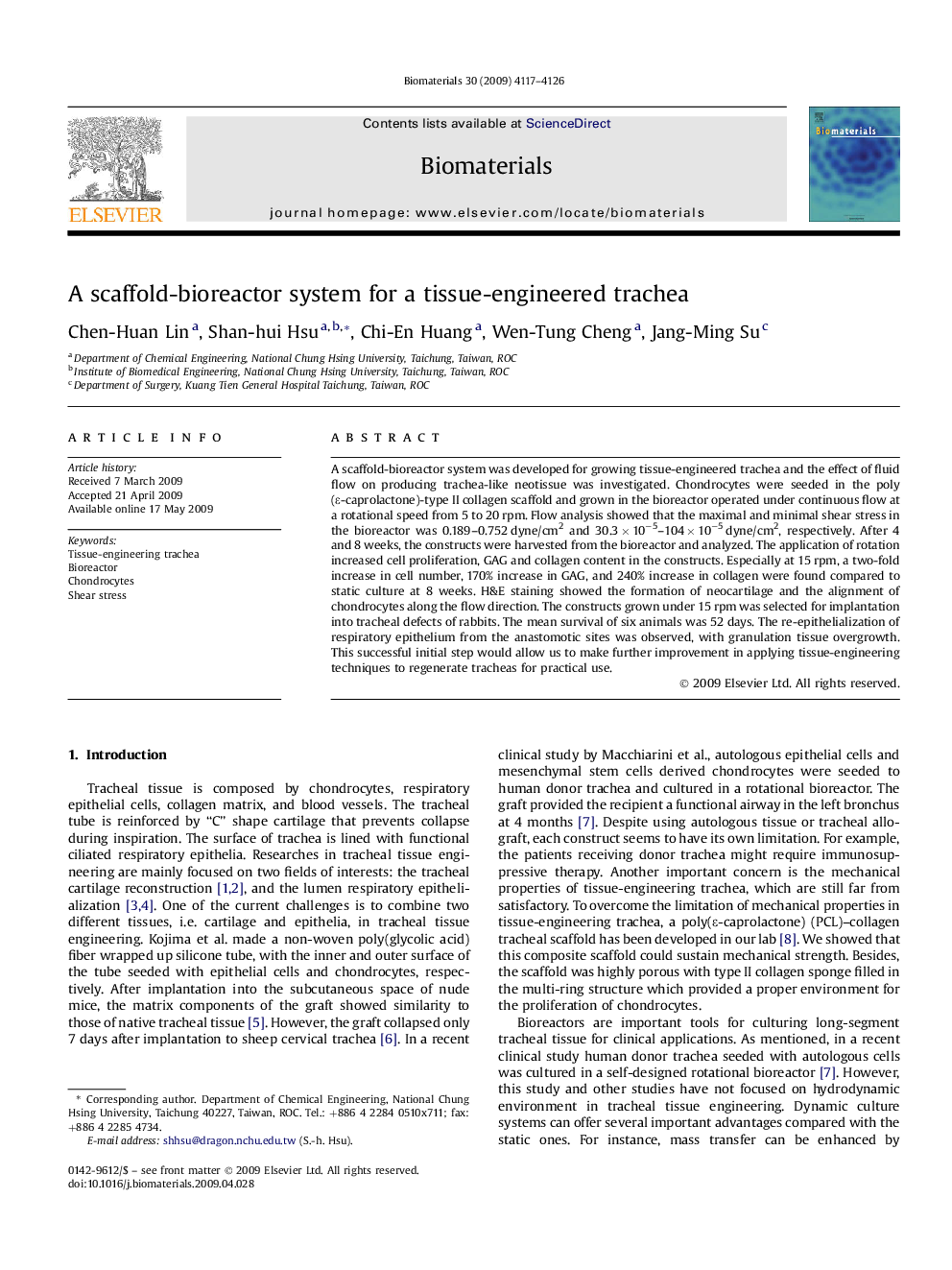| Article ID | Journal | Published Year | Pages | File Type |
|---|---|---|---|---|
| 9935 | Biomaterials | 2009 | 10 Pages |
A scaffold-bioreactor system was developed for growing tissue-engineered trachea and the effect of fluid flow on producing trachea-like neotissue was investigated. Chondrocytes were seeded in the poly(ɛ-caprolactone)-type II collagen scaffold and grown in the bioreactor operated under continuous flow at a rotational speed from 5 to 20 rpm. Flow analysis showed that the maximal and minimal shear stress in the bioreactor was 0.189–0.752 dyne/cm2 and 30.3 × 10−5–104 × 10−5 dyne/cm2, respectively. After 4 and 8 weeks, the constructs were harvested from the bioreactor and analyzed. The application of rotation increased cell proliferation, GAG and collagen content in the constructs. Especially at 15 rpm, a two-fold increase in cell number, 170% increase in GAG, and 240% increase in collagen were found compared to static culture at 8 weeks. H&E staining showed the formation of neocartilage and the alignment of chondrocytes along the flow direction. The constructs grown under 15 rpm was selected for implantation into tracheal defects of rabbits. The mean survival of six animals was 52 days. The re-epithelialization of respiratory epithelium from the anastomotic sites was observed, with granulation tissue overgrowth. This successful initial step would allow us to make further improvement in applying tissue-engineering techniques to regenerate tracheas for practical use.
